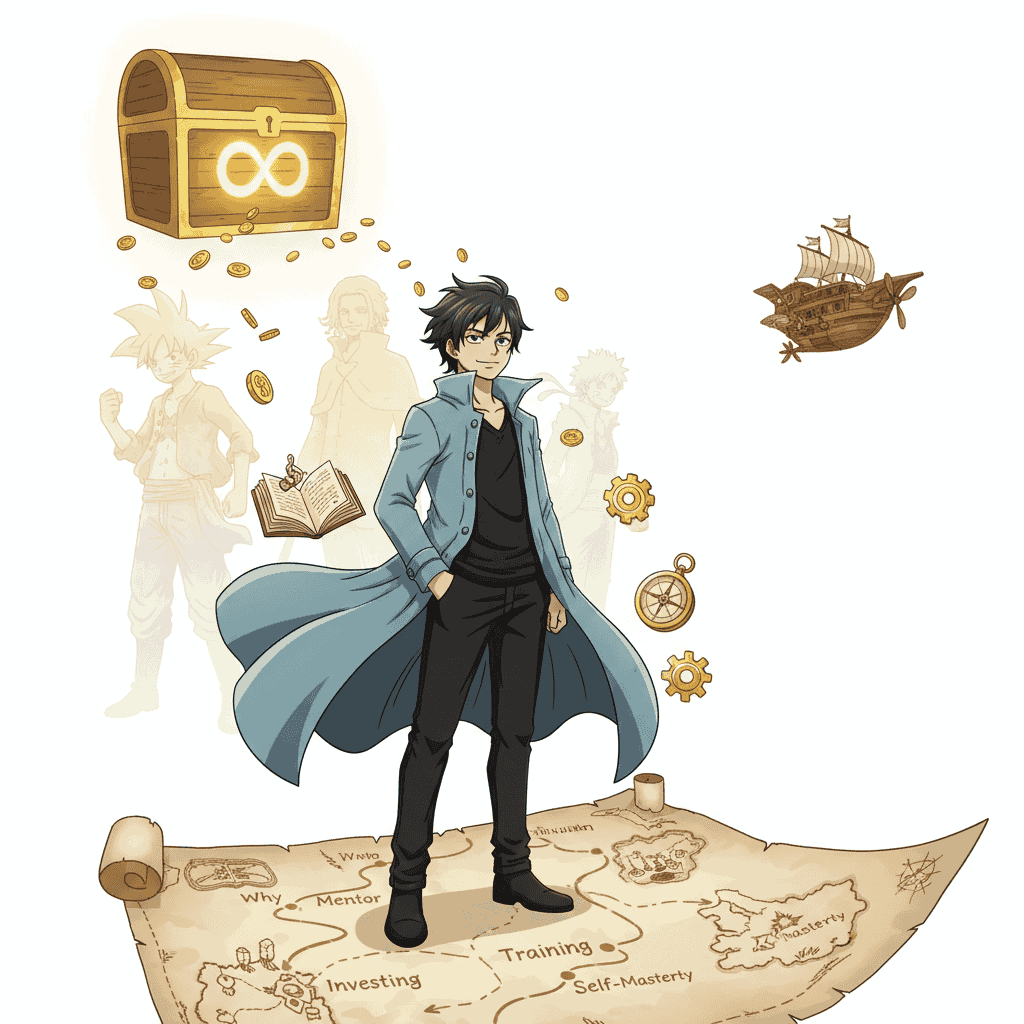From Zero to Wealth: An Anime Character’s Journey to Financial Freedom explores how anime-style storytelling reveals real-life lessons on money, mindset, and financial growth.
Discover how to go from broke to financially free through discipline, skill-building, and smart investing.
We’ve all been there. Sitting cross-legged in the glow of the screen, a bag of chips in hand, completely lost in the epic saga of a hero defying gods, a shinobi protecting their village, or a pirate chasing an impossible dream. We admire their strength, their resolve, their unbreakable will.
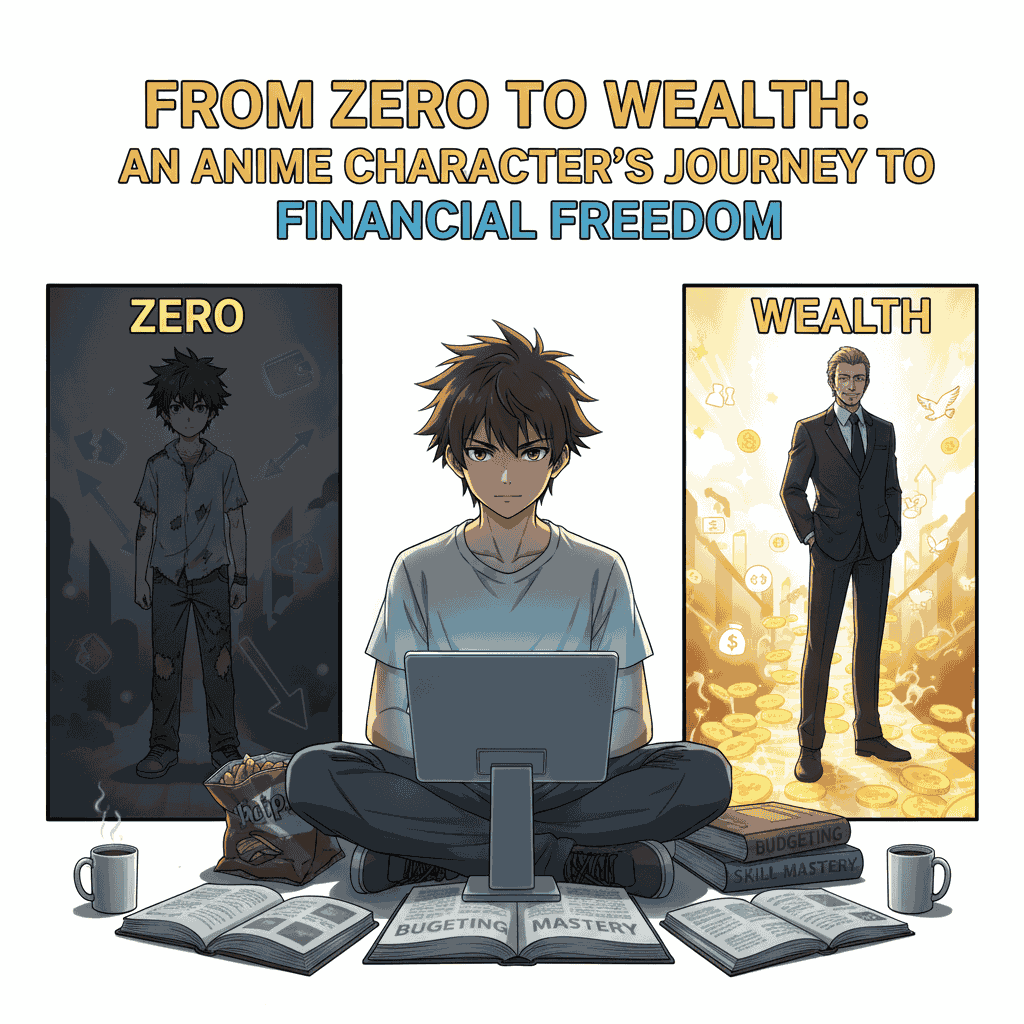
But have you ever stopped to think about their finances?
In a world where a single energy blast can level a city, the concept of a 401(k) or a high-yield savings account seems… quaint.
Yet, if you peel back the layers of supernatural power and world-ending plots, you’ll find that the most beloved anime characters are on a journey we can all relate to: the climb from having nothing to building a life of security, purpose, and, ultimately, freedom.
This isn’t about finding the One Piece. It’s about the principles that would allow a character to afford the search in the first place.
Let’s embark on a different kind of adventure, analyzing the financial metamorphosis of a typical shonen protagonist. We’ll call him Kaito.
Act I: The “Zero” – A Portrait of Destitution
Kaito’s story begins in a familiar state of shonen poverty. He lives in a small, rundown apartment that makes a broom closet look spacious.

His diet consists primarily of instant ramen, and the concept of “leftovers” is a luxury he can’t comprehend. He’s “broke,” but not just in the monetary sense. He is broke in resources, knowledge, and often, support.
This is the financial equivalent of having no chakra, no Quirk, no Reiatsu. It’s the starting point.
The Financial Profile of “Zero”:
- Income: Irregular and unreliable. Kaito takes on odd jobs—delivering newspapers, hauling cargo at the docks, getting pummeled as a training dummy at the local dojo. There is no salary, only meager, cash-in-hand payments.
- Expenses: 100% of his income goes to survival: rent, utilities, and the cheapest calories he can find. There is no emergency fund. A single broken window or a spike in ramen prices constitutes a crisis.
- Assets: A single change of clothes, a worn-out pair of shoes, and a dream. Net worth: profoundly negative if he has any debt.
- Mindset: Short-term survival. The question is always, “How do I eat today?” not “How will I retire?” He believes wealth is for lucky people or villains, a distant dream as unreachable as the heavens.
This is where so many of us feel trapped. The cycle feels endless. You work to eat, and you eat to have the energy to work. But like every great hero, the first step out of this abyss isn’t a power-up; it’s a shift in perspective.
The Catalyst: Finding a “Sensei” and a “Why”
In anime, no hero ascends alone. Naruto had Iruka and Jiraiya. Izuku Midoriya had All Might. Kaito, too, needs a mentor.
For our purposes, the “Sensei” isn’t just a person. It’s Financial Education. It’s the book, the podcast, the blog post, or the wise friend who introduces him to fundamental concepts. This Sensei doesn’t give him money; they give him a map.

The lesson begins with a single, powerful question: “What are you fighting for?”
Is it just to survive? Or is it for something greater? For Kaito, his “Why” becomes the engine of his journey.
Maybe he dreams of supporting his little sister, of buying a home for his found-family crew, or of funding his own dojo one day.
This “Why” is his All Might, his Hokage dream. It’s the emotional fuel that will make him willing to endure the grueling training of financial discipline.
The First Technique: The Budgeting Jutsu
Sensei’s first lesson is brutal in its simplicity: “You must tell your money where to go, or you will always wonder where it went.”
Kaito learns to track every single ryo (or yen) he earns and spends. He doesn’t need a fancy app; a simple notebook will do. This is his first “power scan”—an assessment of his current abilities.

He’s shocked to see how much he’s unconsciously spending on cheap, sugary drinks or bus fares that he could replace with walking.
He creates a zero-based budget, a technique where his income minus his expenses equals zero. Every coin has a mission. The categories are basic:
- Rent & Utilities: 50%
- Food (Now including actual vegetables!): 20%
- Transportation: 10%
- The Emergency Fund (His first “Chakra Reserve”): 10%
- Skill Development (His “Training Regimen”): 10%
This budget is his training weights. It’s uncomfortable and restrictive, but it forges discipline. He’s no longer a leaf blowing in the wind of his impulses; he is the one directing the current.
Act II: The Grind – Leveling Up His Earning Potential
With his basic survival secured by his Budgeting Jutsu, Kaito realizes a painful truth: you cannot budget your way to wealth on a poverty-level income.
Cutting back on ramen only gets you so far. It’s time to increase his “combat power”—his earning potential.
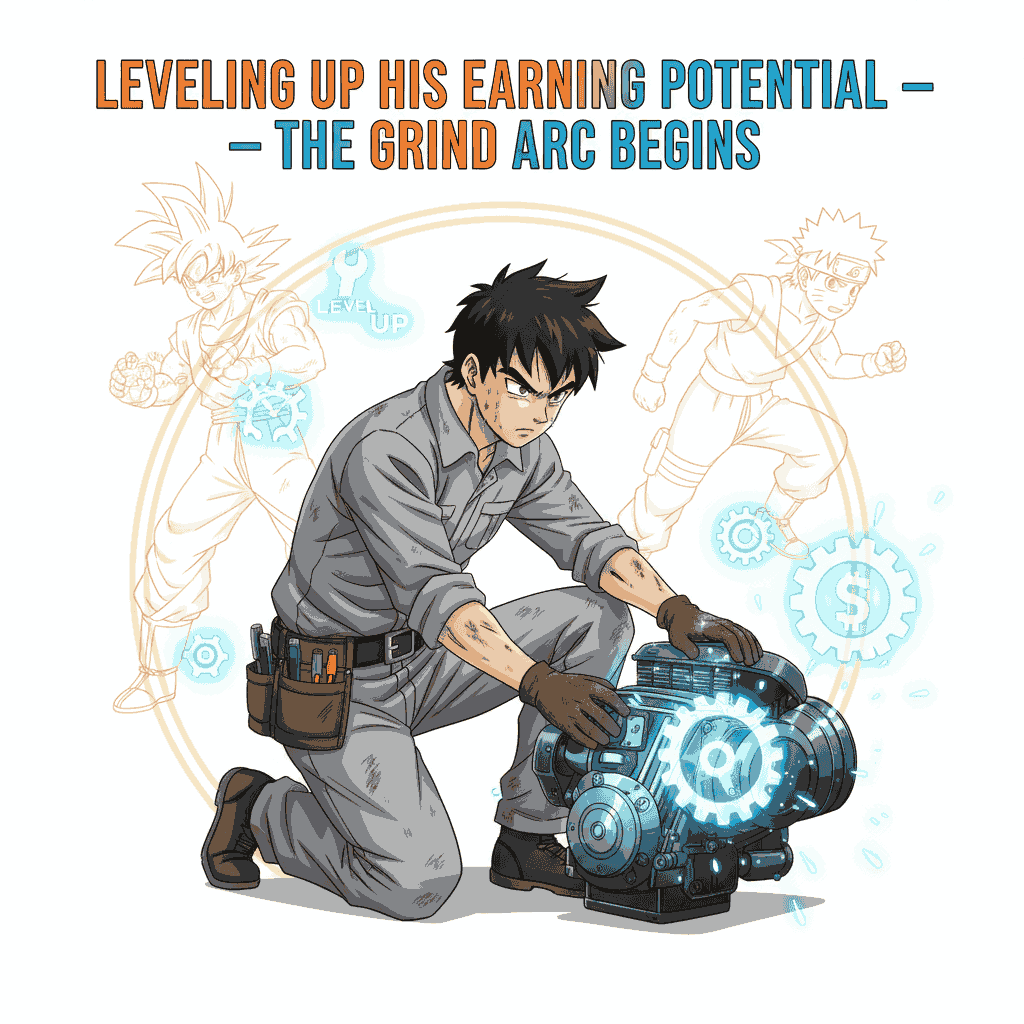
In anime, this is the intense training arc. Rock Lee is removing his weights. Goku is training in 100x gravity. For Kaito, this means one thing: developing a valuable skill.
He looks at the odd jobs he’s been doing. Which one has the most potential? He’s been doing manual labor, but he’s also shown a knack for fixing things around the docks. He decides to apprentice under a mechanic.
The Hustle: Side Quests and Compound Growth
The apprenticeship pays little at first, less than his odd jobs. This is a critical moment of faith. He’s investing time and foregoing income for a future payoff.
He uses his “Skill Development” budget to buy used tools and old engine manuals. He spends his evenings studying, his fingers stained with grease.
Simultaneously, he doesn’t abandon his other income streams entirely. He continues a few delivery routes, but now he sees them not as his life, but as “side quests” funding his main mission.
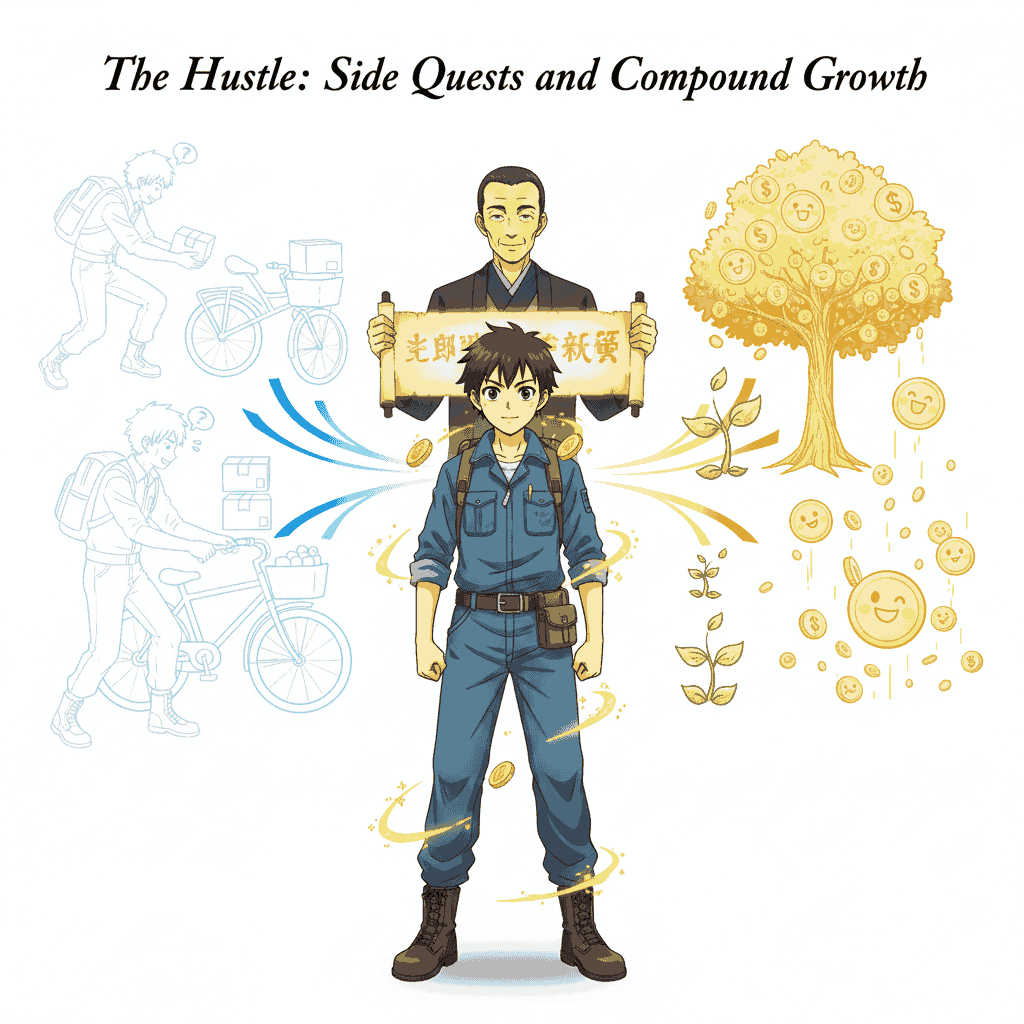
Every ryo from these quests is funneled directly into his Emergency Fund and his Skill Development fund.
And here, Sensei introduces him to his most powerful ally: The Compound Growth Jutsu.
“Imagine your money training while you sleep,” Sensei says. “Every ryo you save and invest is like a clone, working tirelessly to create more clones.
At first, the growth is invisible, like a sapling. But with consistent feeding, it becomes a mighty tree, then a forest. This is the power of compounding.”
Kaito’s goal is to build an emergency fund of 3-6 months of expenses. This fund is his personal Konoha Barrier.
It protects him from life’s unexpected attacks—a broken tool, an illness, a period of no work. It gives him the peace to focus on his training without desperation.
Act III: The Ascent – Building His Financial “Guild”
After months of grueling work, Kaito’s apprenticeship pays off. He becomes a certified mechanic, and his income triples. He’s finally breached the survival ceiling.
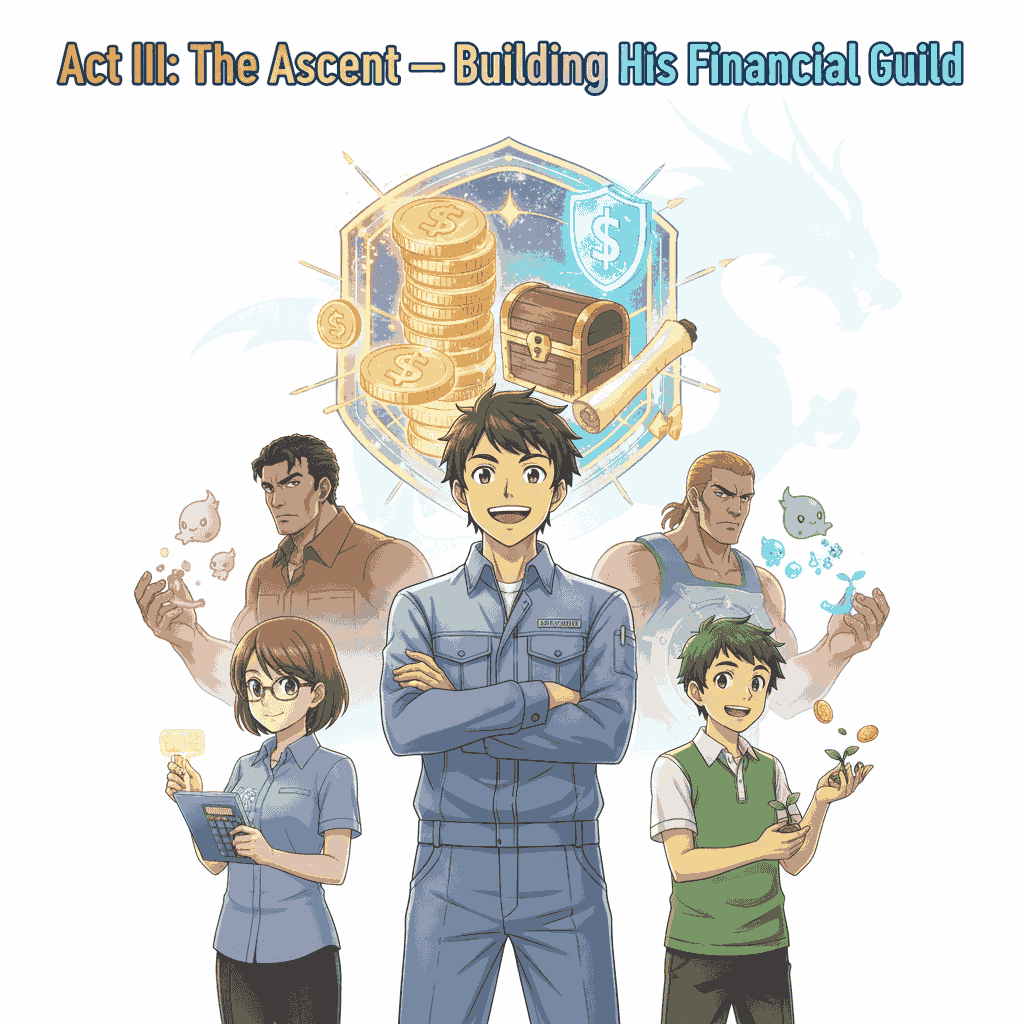
This is a dangerous new stage. The temptation of “lifestyle creep”—the desire to immediately upgrade his apartment, his food, his clothes—is his new villain.
But Kaito remembers his “Why.” He resists the urge to inflate his lifestyle. Instead, he uses his new power to build his financial “Guild”—a diversified team of assets that work for him.
Assembling the Team:
- The Tank: The Fully-Funded Emergency Fund. His first order of business is to solidify his defenses. He tops up his emergency fund and places it in a separate, high-yield savings account—his “fortress.” This money is untouchable for anything but true emergencies.
- The Damage Dealers: Retirement and Brokerage Accounts. With his defenses secure, he goes on the offensive. He opens a retirement account (his “Long-Term Mission Fund”) and a standard brokerage account. He doesn’t try to pick individual “winning” stocks like a gambler. He follows the “Sage of Six Paths” approach: he invests in low-cost index funds, which are like buying a small piece of the entire economy. He is betting on the world’s progress, not his own luck. He sets up automatic contributions. The money is invested before he even sees it.
- The Support Class: Skill and Self-Improvement. He continues to invest in himself. He takes an advanced course on electric vehicle repair, a niche and valuable skill. He buys better tools, increasing his efficiency and the quality of his work. This directly leads to raises and better job opportunities.
- The Scout: Insurance. Sensei teaches him about risk management. Kaito, now having something to lose, gets health insurance and liability insurance for his work. It’s a small, regular cost that protects him from a catastrophic, wealth-obliterating event.
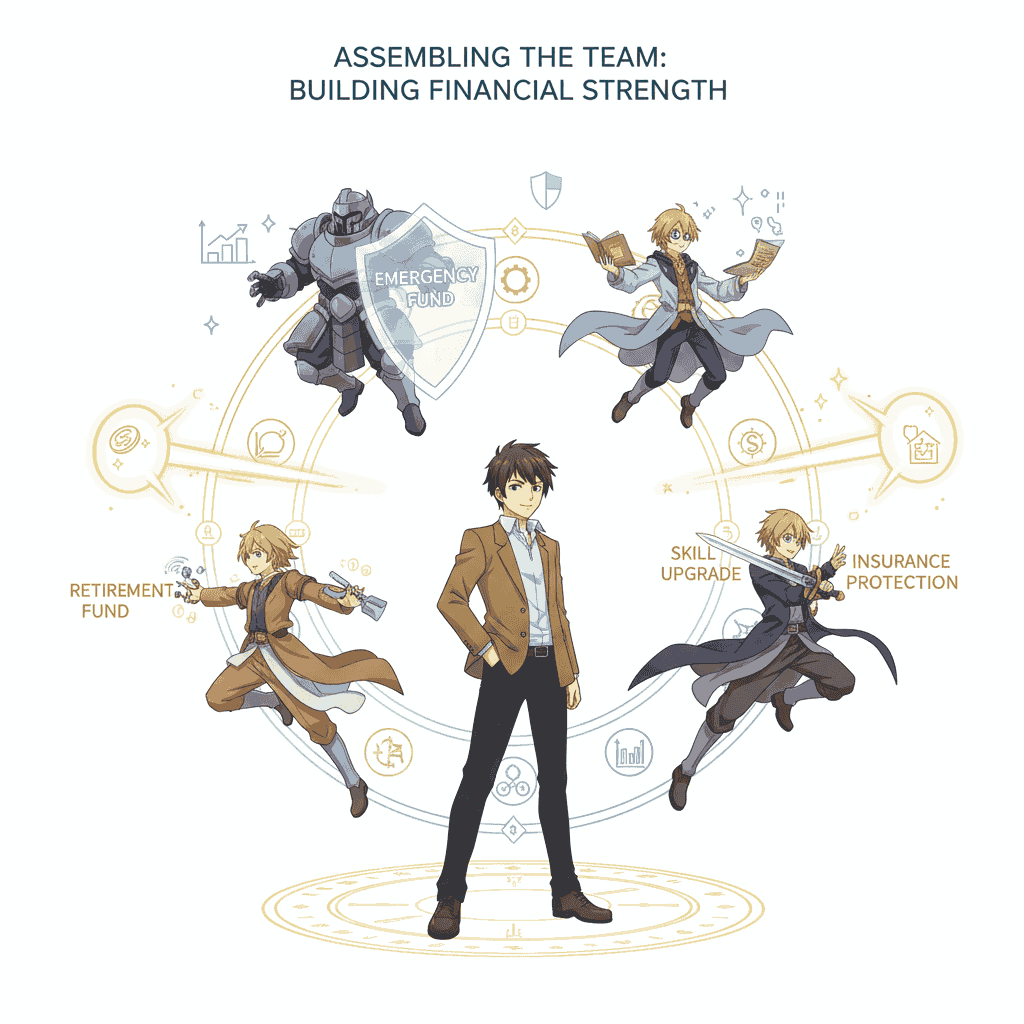
Kaito’s life is still modest, but the frantic anxiety is gone. He can afford to eat well, he has a comfortable safety net, and he sees a path forward. He’s not just surviving; he’s building.
Act IV: Mastering the Flow – Advanced Financial Jutsus
Years pass. Kaito is now a respected master mechanic and runs a small, successful shop. His income is stable and high.
His automated investments have been growing steadily, fueled by the relentless power of compound interest. His “clone army” of assets is now a formidable force.
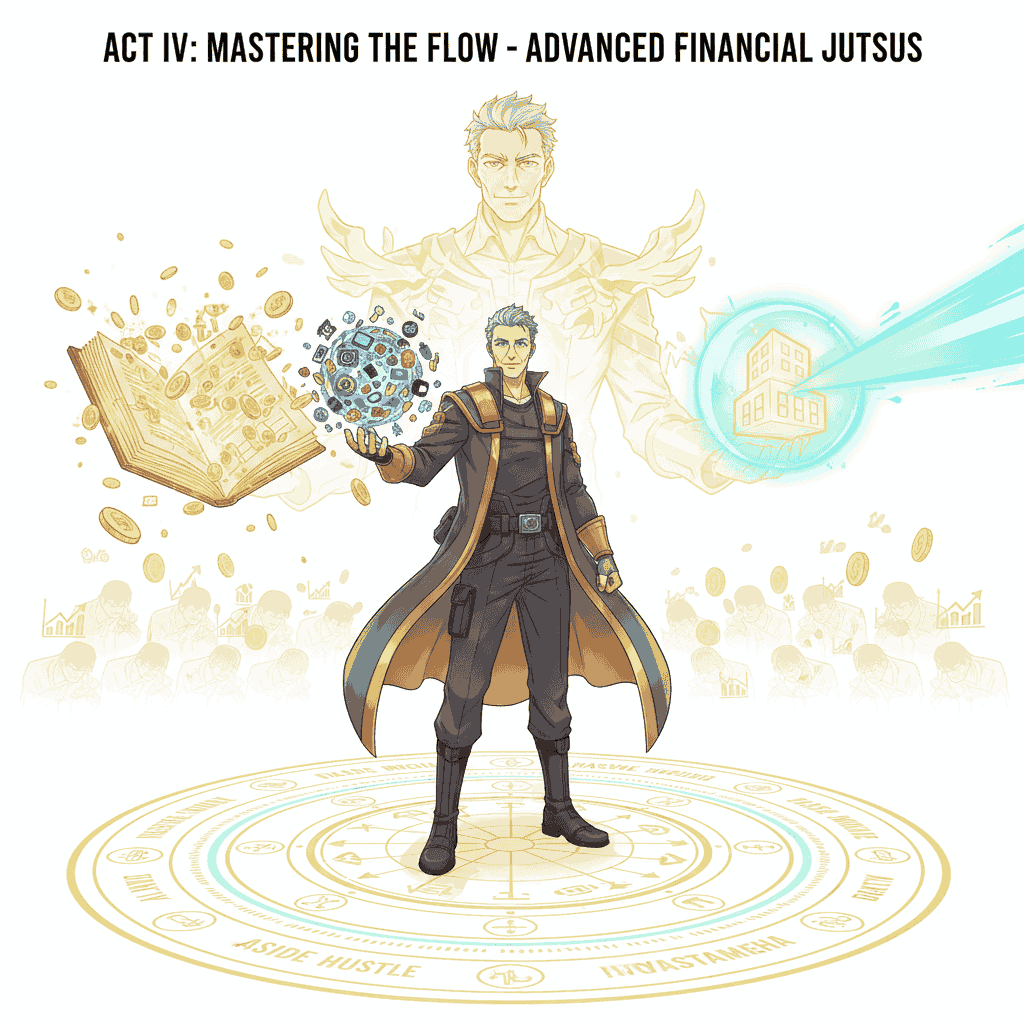
This is where he learns the high-level techniques—the Rasengans and Bankais of personal finance.
- The Side Hustle Rasengan: With his shop running smoothly, he starts a YouTube channel teaching basic car maintenance. It starts small, but it leverages his expertise into a new, scalable income stream. It’s a passion project that eventually generates ad revenue and sponsorships.
- The Asset Creation Bankai: He writes a short ebook for aspiring mechanics. The initial effort is significant, but once created, it becomes an “asset” that sells copies while he sleeps. This is the digital equivalent of owning a rental property.
- The Debt-Kamehameha (For Good Debt): He understands the difference between destructive debt (high-interest credit cards) and constructive debt. When an opportunity arises to buy the building his shop operates from, he takes a calculated business loan. The rental income from the upper floors and the stability of owning his business premises now work for him, making the debt a tool, not a chain.
His focus shifts from active income (trading time for money) to passive and portfolio income (money working for him). He hasn’t retired; he’s simply changed his role from the frontline fighter to the strategic commander.
The Final Boss: Mindset and Legacy
The final boss on the road to financial freedom is not a market crash or a recession. Those are just powerful enemies to be strategized against. The final boss is internal.
It’s the fear that makes you sell your investments in a downturn. It’s the complacency that makes you stop learning. It’s the comparison that makes you abandon your sensible plan to buy a flashy new car you don’t need.
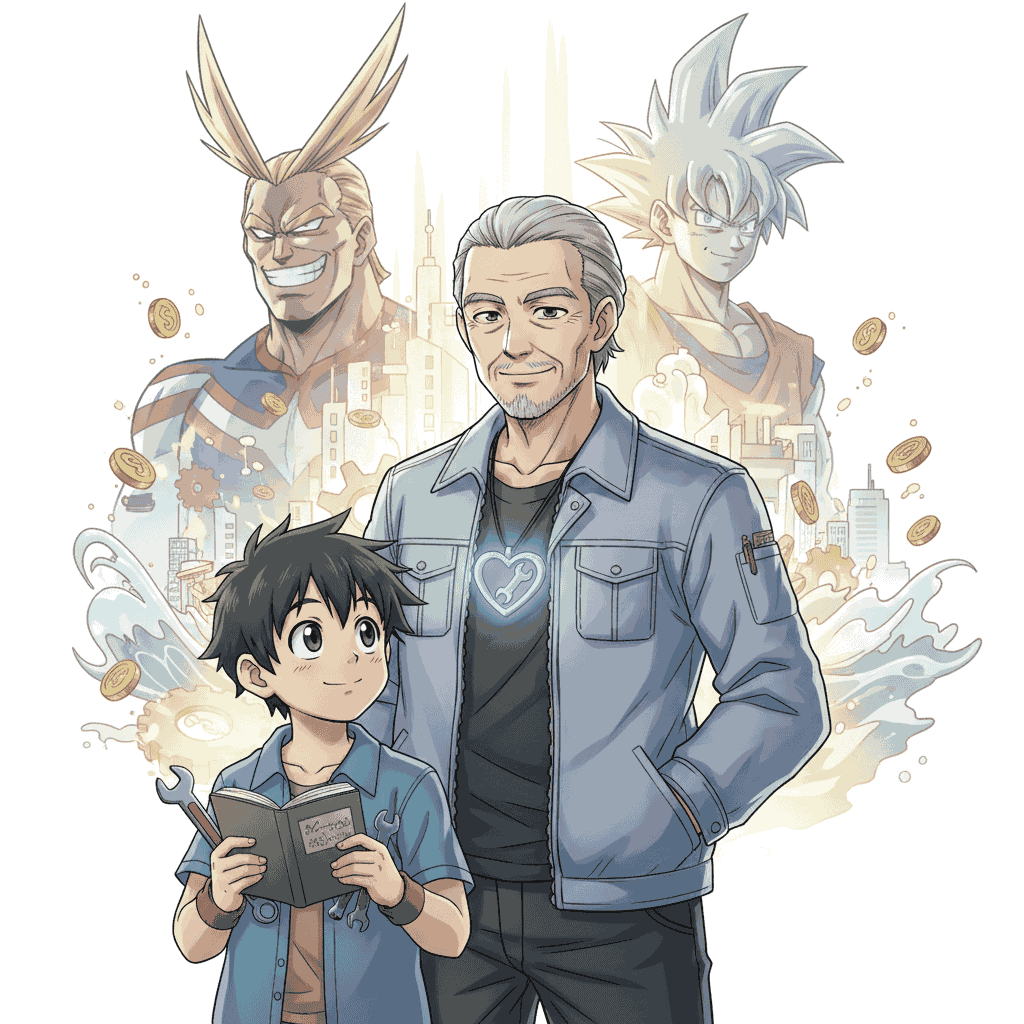
Kaito wins this battle by staying true to his “Why.” His wealth is not for showing off. It’s for freedom. The freedom to choose his projects, to spend time with his crew, and to help the next generation of struggling apprentices.
This is the stage of true wealth—legacy. Just as All Might passed One For All to Izuku, Kaito begins to mentor a young, bright-eyed apprentice from a poor background.
He teaches them not just mechanics, but the financial principles that changed his life. He supports local charities. His wealth becomes a tool for creating positive change, extending his impact far beyond his own life.
Epilogue: What is Your “One Piece”?
Kaito’s journey from zero to wealth mirrors that of every great anime hero. It wasn’t about a single, lucky break. It was a saga defined by:
- A Powerful “Why”: The emotional core that fueled his discipline.
- A Wise Mentor: The pursuit of knowledge and education.
- Relentless Training: The daily grind of budgeting, saving, and skill-building.
- Strategic Power-Ups: Investing in assets and leveraging compound growth.
- Mastering the Self: Overcoming the internal battles of fear and impatience.

The “One Piece” was never just a chest of gold. For Gol D. Roger, it was the adventure and the freedom it represented. For Luffy, it’s the title of Pirate King, which symbolizes ultimate freedom.
Your “One Piece” is your own financial freedom. It’s the freedom to live life on your terms, to pursue your passions without financial anxiety, and to build a legacy for those you care about.
The journey starts from zero, but it doesn’t have to end there. Find your Sensei. Define your Why. Master your Budgeting Jutsu. Your grand, epic financial adventure begins with a single, conscious step. Now, go—your world awaits its hero.
Other Interesting Posts To Read:
Saving Like a Super Saiyan: Anime-Style Strategies for Building an Emergency Fund
How to Train Your Money: Budgeting Lessons From Anime Heroes
What Anime Teaches Us About Saving Money and Simple Living
10 Financial Lessons You Can Learn from Anime Characters
Why Solo Leveling Is the Ultimate Power Fantasy Anime?

